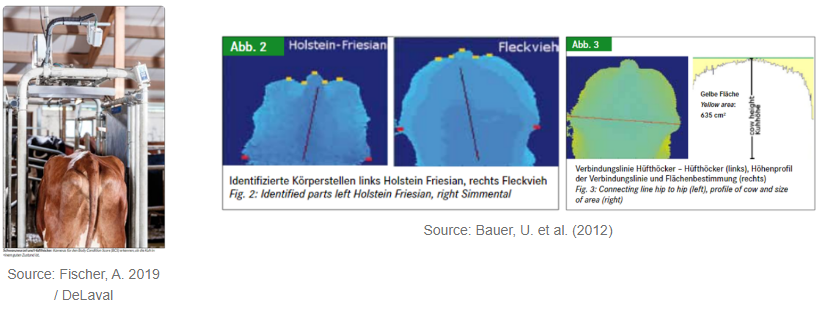An estimation of the nutritional status and thus the fat reserves of the animals provides important information on the feeding situation. If the values are too high or too low, countermeasures can be taken to reduce health problems for cow (and calf). The commonly used methods to estimate fat reserves of cows are body condition score (BCS) and backfat thickness (BFT). But these methods are subjected to restrictions regarding objectivity of results and amount of work. Therefore, a visual three-dimensional TOF-sensor system has been developed for the automatic determination of body condition of cows during lactation.

The designed software evaluates recorded images for further processing. In the next step characteristics for body condition are extracted of suitable images. These characteristics are integrated in a linear model, which estimates the body condition score.
The authors concluded in 2012: Automatic assessment of the body condition of cows with the developed 3D sensor system is possible in principle. However, further investigations and technical improvements still need to be made. 2019 results: the application is not only possible for dairy cows, but also for suckler cows. However, the number of users is currently still very low.
Literature:
- Bauer, U. et al. (2012): Automatische Beurteilung der Körperkondition von Milchkühen. Landtechnik 67 (6), pp. 409–412,
https://www.landtechnik-online.eu/landtechnik/article/view/2012-67-6-409-412 - Fischer, A. (2019): Die Landwirtschaft wird digital. Die gläserne Kuh. com-magazin.de
https://www.com-magazin.de/praxis/business-it/landwirtschaft-digital-1759621.html?page=2_die-glaeserne-kuh
This innovation has an impact on:
- Socio-economic resilience: it will increase costs for equipment.
- Animal health and welfare: The innovation will help to increase the longevity of the animals and herd's stock health by a clear estimation of BCS
- Production efficiency and meat quality: animals in good shape have better fertility